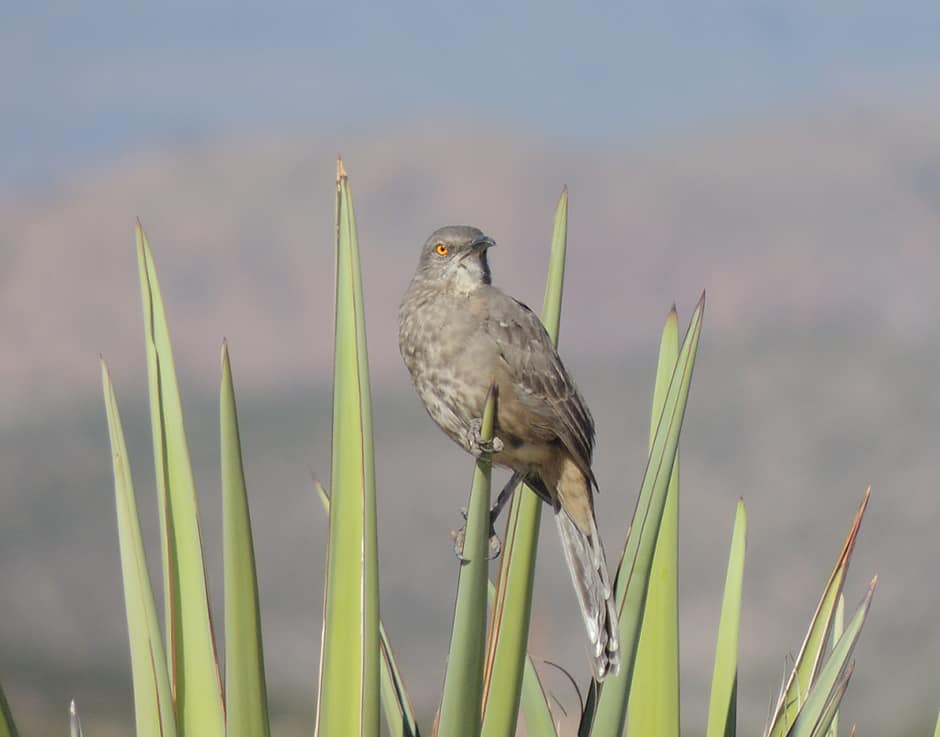Share this article
Is every year ‘the year of the bird?’
If you follow the lunar new year, the year of the pig has recently begun. But should it really be the year of the bird?
OK, the National Geographic Society gave that designation to 2018. But why end a good thing, right?
For Bureau of Land Management wildlife biologist Geoffrey Walsh, maybe every year should be considered the year of the bird. BLM lands are often associated with game. The role these landscapes play for migratory mammals like mule deer (Odocoileus hemionus), pronghorn (Antilocapra americana)and elk (Cervus canadensis) has gotten a lot of attention lately. But BLM land also provides important habitat for a vast array of birds, Walsh said, from migrating shorebirds at desert stopovers to upland game birds that occupy the landscape year-round.
For BLM biologists, Walsh said, improving conditions for these birds is a constant priority.

“There is really no need to say, ‘this is the year of the bird, now let’s go out and do something for birds,’ because they’re always doing something for birds,” he said.
Last year, the BLM restored some 400,000 acres of landscape for greater sage-grouse (Centrocercus urophasianus). It’s an uphill battle, Walsh said, barely keeping pace with acreage lost to wildfires and invasive species, but it marks an improvement. Restoring the so-called “wet meadows” needed for greater sage-grouse requires management improvements to as much as 50 times as much adjacent upland habitat, Walsh said. These improvements not only help the greater sage-grouse raise its young. It also benefits other species that rely on sagebrush landscapes, including elk, mule deer and pronghorn, as well as sage-obligate songbirds.
Sage-grouse conservation, Walsh said, “has morphed into becoming sagebrush conservation.”
Other upland game birds the BLM manages for include mountain quail (Oreortyx pictus), sharp-tailed grouse (Tympanuchus phasianellus), sandhill cranes (Grus canadensis)and wild turkeys (Meleagris gallopavo).
Throughout the Southwest, the BLM is working with five state agencies and three nonprofits to survey and monitor desert thrashers, which are at risk of declines due to increasing drought in an already harsh environment.
“These conditions lay the foundation for a perilous future for our Toxostomathrashers of the deserts,” concluded Sonoran Joint Ventures, a conservation network for birds in the region. The Bendire’s thrasher (Toxostoma bendirei) and LeConte’s thrasher (T. lecontei) are considered the two fastest declining species in arid lands, landscapes the North American Bird Conservation Initiative identified as of particular concern due to habitat loss, fragmentation and drought.
In Colorado’s San Luis Valley, the Blanca Wetlands has shown how water negotiations in the arid West can play a key role in protecting fish and wildlife. The wetlands attracts such a vast population of shorebirds and waterfowl each year, it is eligible to be named a Western Hemisphere Shore Bird Reserve Network Site, Walsh said.
Waterfowl and shorebirds also rely on the Pariette Wetlands near Vernal, Utah, a sort of desert oasis that has become an important sitefor these migrating birds, including American white pelicans (Pelecanus erythrorhynchos) and white-faced ibis (Plegadis chihi), since a water impoundment created the wetlands in the mid-1970s. Overall, the Pariette Wetlands provide that little known gem for desert waterfowl hunting in the fall, too.
In Idaho, the BLM is working to protectlong-billed curlews (Numenius americanus), which are declining largely at the hands of poachers.
In a species recovery effort, the least Bell’s Vireo (Vireo bellii pusillus), was selected as the first species of interest in the Collaborative Wildlife Protection and Recovery Initiative in southern and central California. The CWPRI is a collaborative partnership among the Department of Defense, BLM, U.S. Forest Service, Natural Resources Conservation Service, U.S. Fish and Wildlife Service, National Park Service, and National Fish and Wildlife Foundation to select a species of communal interest and priority and strategically invest financial and other resources towards addressing its recovery needs. Recovery efforts focus on species inventories and riparian restoration.
It’s ongoing work, Walsh said, and it doesn’t end just because it isn’t “the year of the bird” anymore. “This is what we do on an annual basis,” he said, “to make practically every year a year of the bird.”
The Bureau of Land Management is a Premier Partner of The Wildlife Society.
Header Image:
In Idaho, the BLM is working to protect long-billed curlews, which are declining largely due to poachers.
©Liz Urban








